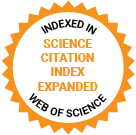Journal of Medical Internet Research
The leading peer-reviewed journal for digital medicine and health and health care in the internet age.
Editor-in-Chief:
Gunther Eysenbach, MD, MPH, FACMI, Founding Editor and Publisher; Adjunct Professor, School of Health Information Science, University of Victoria, Canada
Impact Factor 6.0 CiteScore 11.7
Recent Articles

During 2024-2025, global emergencies triggered intense online discourse, presenting a unique opportunity to examine how cultural factors shape emotional expression and knowledge dissemination. Understanding these dynamic mechanisms is crucial for enhancing the effectiveness of digital health communication and optimizing crisis response strategies.

Non-adherence to antipsychotic medication remains one of the most significant challenges in the management of schizophrenia, contributing to relapse, rehospitalization, and functional decline. Although psychoeducational interventions are a key intervention for relapse prevention, traditional formats often lack interactivity and cultural resonance, thereby limiting engagement and sustained impact. Digital health innovations offer an opportunity to improve both treatment adherence and user experience, but evidence in schizophrenia populations remains limited.

Gender concordance [GC] between patients and physicians has been linked to trust and satisfaction in traditional healthcare. However, its role in telemedicine, especially in culturally complex settings like India, is underexplored. In India’s culturally diverse and gender-sensitive context, understanding Gender concordance becomes particularly relevant for specialties such as gynecology, dermatology, psychiatry, and urology, where discussions often involve intimate or stigmatized concerns. Despite rapid telemedicine expansion, little empirical evidence exists on whether GC affects patient-reported outcomes in this context.

Counseling in family dementia care aims to support caregivers in mastering challenges. The use of information and communication technologies (ICT) to administer counseling can improve accessibility. Evidence syntheses report inconsistent findings on the effectiveness of technology-assisted counseling. There is a considerable heterogeneity in outcomes assessed in clinical trials, and approaches to develop and evaluate interventions are not guided by theory in most cases.

Traditional rehabilitation research often excludes the voices of individuals with lived experience of traumatic brain injury (TBI), resulting in interventions that lack relevance, accessibility, and effectiveness. Community-Based Participatory Research (CBPR) offers an alternative framework that emphasizes collaboration, power-sharing, and sustained engagement with patients, caregivers, and clinicians.

Lung cancer screening with low-dose computed tomography (LDCT) among heavy smokers can decrease lung cancer mortality. Smoking cessation intervention is recommended within the screening program, however, the methods for smoking cessation in LDCT screening context are not well established. We have previously shown that a novel smartphone application can increase the chance for smoking cessation along with lung cancer screening. Effects of lung cancer screening, smoking cessation, and use of smartphone application to health-related quality of life (HRQoL) are widely unknown.



Preeclampsia is a severe hypertensive disorder with rising global prevalence. While machine learning (ML) models for predicting preeclampsia are increasingly published, existing evidence shows high heterogeneity, and the distinction between internal performance and external transferability remains unclear.

Effective communication is fundamental to health care; however, demographic transitions and a widening global health workforce gap are intensifying the imbalance between service demand and resource supply. Health conversational artificial intelligence (HCAI) based on large language models offers a potential pathway to improve the accessibility and personalization of care. Nevertheless, the lack of a rigorous, user-centered evaluation framework limits the systematic assessment of HCAI quality, raising concerns regarding safety, reliability, and clinical applicability.

Developmental dysplasia of the hip (DDH) is a common pediatric orthopedic disease, and health education is vital to disease management and rehabilitation. The emergence of large language models (LLMs) has provided new opportunities for health education. However, the effectiveness and applicability of LLMs in education with DDH have not been systematically evaluated.
Preprints Open for Peer Review
Open Peer Review Period:
-
Open Peer Review Period:
-
Open Peer Review Period:
-

















